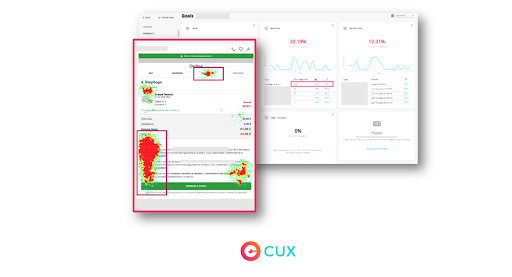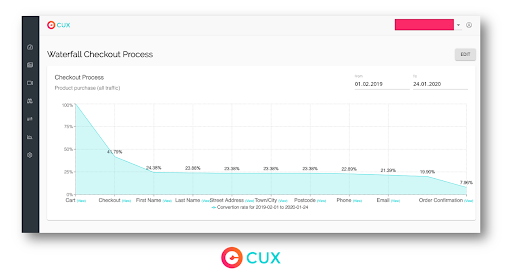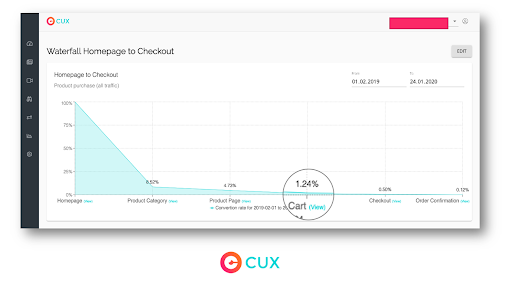Why do we analyze user behavior? Of course, to finally get to know the real path of the client. And „the real” means, not the one we’ve planned for them. I can assure you that most of the users do not make it through the path: product -> cart → checkout. The true customer journey project must include stops like product comparisons in tabs, returning to the cart, checking shipping costs, going away from the computer to answer the phone (session time), and a whole host of other little scenarios.
Working with qualitative data, therefore, comes down to optimizing a real customer journey – not the one we dreamed of when creating our product! However, so that the analytical fun was endless, we divide the work on the customer journey into 3 levels: marketing, product, and conversion optimization.
3 levels of optimization
Marketing optimization
Marketing activities – within the meaning of the user behavior analysis – are all those activities that are to lead the customer to conversion. I’m talking about traffic coming from the so-called referrals (external links). Quite often, we focus on looking at the statistics – CPC, CPA, ROI, bounce rate, clicks, etc. to test the quality of our campaign’s masterstrokes. In other words – you can smell the smoke, but do not see the source of the fire.
To properly optimize marketing activities, we need to know exactly what is happening to our users along the entire customer journey. Where they land, what they see, how they react, what they click. So we optimize based on observation.

Heatmap showing campaign traffic at CUX
Do you want an example? There you go! We started the analysis of Valentine’s Day activities of the polish jewelry brand with a quick review of the behavior of users coming from the Facebook campaign. As you probably suspect, the slogan “Valentine’s Day” fits a lot of products in the jewelry industry! And this vastness was reflected in the heatmap. We saw that people coming from campaign clicks, instead of focusing on a wide selection of rings, necklaces, and bracelets, went straight to the filtering option by price. The conclusion – simple and almost immediate – it is worth filtering campaign creations for our clients and go out into the world with the contextual campaign and an exemplary message “The most beautiful Valentine’s gifts up to PLN 100”.
Product optimization
Meaning: everything that concerns our product. Changes in forms, better CTA (call to action), redesigning the product page, facilitating the customer journey, improving the product management process, etc. How do we go about optimizing the customer path in the context of the product? We shorten it! Why? Customers – those online in particular – do not always have a strong purchasing incentive. It is not uncommon for them to be driven to the site of your product or service by a whim. The longer the path to conversion – the more time for the user to change their mind! To test out your product, one of the best ways is using a mockup generator in case you don’t have an in-house designer.
A company from the footwear industry has found about it to its cost! At one stage of the customer journey of their e-commerce clients, there were a lot of rage clicks, or furious clicks if you will. It was unfortunate that frustration appeared in one of the most sensitive places – at the checkout. Thanks to the behavioral analysis, we were able to find the solution quickly. On heatmaps presenting rage clicks, it turned out that the problem was caused by checkboxes with marketing consents. On mobile, they were too close to the edge and users had trouble with hitting the fields.

Experience Metrics and heatmaps showing users’ problems
We’ve also noticed the accumulation of clicks around the delivery methods section. The immediate solution allowing for product optimization was to move and enlarge checkboxes and add information about delivery costs in the previous steps. Voilà! Satisfied customers, no frustration, and less time for users to change their compulsive purchasing decisions 😉
Conversion optimization
Your biggest competition is not other companies, but your customers’ problems. The average number of customer visits whose experience with the site was not good is 1.3 visits, where on average satisfied customers come to us 5 times. It gives you plenty of room for conversion! This is what the final layer of optimization using behavior analysis is all about – conversion optimization.
And here is the first surprise. Conversion optimization does not only consist of the last steps of the sales funnel (cart, checkout). For our improvements to make sense, we need to take a few steps back and look at the entire customer journey – from marketing communication to interactions with a product.
So how do you approach conversion optimization? With an open mind! When you want to increase your conversion, you probably focus on the last steps of the funnel. You analyze the visits of users who already have products in the carts, and you look for improvements there (screen below).

Funnel (Waterfall) view for checkout
Did you manage to increase the number of closed transactions? Lovely! However, take into account that those users whose activities you analyzed to account for only 1.24% of your traffic (screen below)!

Funnel (Waterfall) view for all traffic – users making to the checkout are only 1.24% of the whole traffic.
So before you throw good money after bad to save abandoned carts or optimize checkout, take a look at the whole traffic. Browse the recordings for each step of the funnel (in CUX you can see a list of recordings for each step on the funnel), see why so many users dropped out. Check how you can make their journey easier from the moment they enter the home page to their destination – a Thank-you page for the purchase.
Automation
You already know that optimization of marketing and sales activities can take place – and even should! – on three levels. Each of them is based to a greater or lesser extent on the analysis of user behavior, working with feedback, understanding the consumers. However, I am not leaving you stranded with this vast amount of data. Just make some room for automation.
Regardless of whether you use UX automation tools to better understand user experience or use chatbots to generate more qualified leads and boost customer retention – when thinking about optimizations, it is always worth reaching for proven solutions. In addition, process automation will allow you to save time, which you will now be able to spend on the further development of your business.

